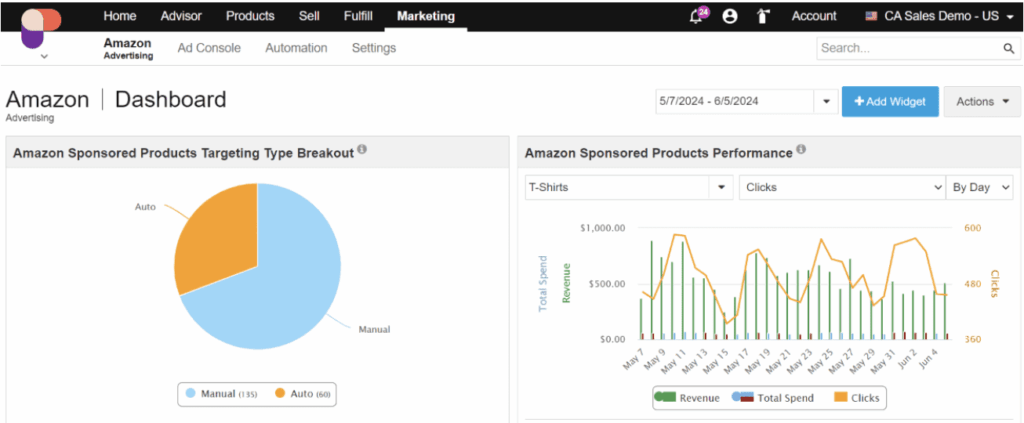
Consumers are spending more time online – and retail media advertising is another way for brands and retailers to reach potential customers. 45% of global consumers said they clicked on a sponsored ad or promoted ad they saw on a marketplace or retail site in the last year, according to the 2023 Online Consumer Behavior Global Report by Rithum and research firm Dynata.
Retail media networks are where retailers sell ad space on their own digital platforms – and their worldwide growth rates continue to rise. Between 2020 and 2025, global retail media advertising spending is on pace to increase by nearly $100 billion, according to eMarketer. Retail media ad spending is projected to increase 21.8% in 2024 alone, outpacing growth rates for nearly all other types of ad spending, according to eMarketer. Amazon will account for 74.2% of retail media ad spend in the U.S., according to Rithum’s October 2023 forecast. While worldwide, Amazon will account for about 42%.
Brands looking to boost sales through retail media ads can do so by leveraging valuable first-party data. What are these ads and how will connecting with advertisers result in new sources of revenue?
Retail media ads offer a profitable option for targeted advertising. Brands looking to boost sales through retail media ads can do so by leveraging valuable first-party data. But first, it is necessary to understand what these ads are and how connecting with advertisers can result in new sources of revenue.
What are retail media ads?
A brand places retail media ads on a retailer’s ecommerce site or app. This is to appeal to customers at the point of purchase. Brands that wish to reach new and relevant consumers will connect with a retailer to create ad campaigns. This allows brands to increase visibility and potentially boost online sales.
First-party data is collected across the whole funnel when consumers engage with a brand’s retail media ad or make a purchase from an online store. That data is then ingested by the marketplace and is available across organic and paid ads to reach customers at every stage of the funnel. This information helps brands learn more about consumers’ shopping patterns and habits. Over time, brands can use these insights to tailor product assortments and/or advertising messaging to increase conversion.
The value of product data
To reach consumers where they shop, Rithum can help brands connect with its expansive network of 40,000 retailers, brands, and suppliers. Our solution optimizes your retail ad campaigns by connecting product details with relevant ad campaigns. This is done using your own inventory data, which can boost product margins.

Rithum serves as one connection to all your retail media channels, including data and workflows.
Rithum’s retail media advertising strategy is growth focused. Ad campaigns adjust as inventory levels change. Conversely, popular-selling products are shifted to priority campaigns.
The ad system also helps brands save on bids, which is the price a brand pays for a click. If a product is labeled as clearance, for example, Rithum’s system offers filters to place ads to groups that are lower priority and lower bid.
Rithum’s is supported by the following media sites:
Amazon Advertising
- Sponsored product
- Sponsored brand
- Sponsored display & DSP
eBay Ads
- Promoted listings standard
- Promoted listings advanced
- Promoted listings express
- Offsite ads
Walmart Connect
- In grid placements
- Carousel placements
- Buy box placements
ZMS
- Dynamic sponsored product
- Selected sponsored product
- Dynamic product selection
Criteo ads
Learn how to expose your products to more consumers by creating, monitoring, and managing all your marketplace and retail site advertising through Rithum. Schedule a demo here.
 Back to all
Back to all








